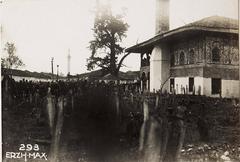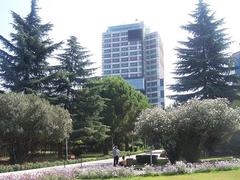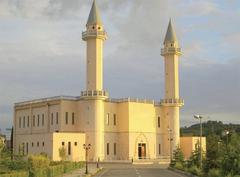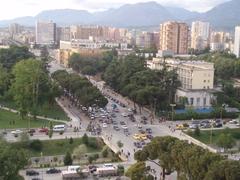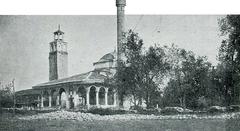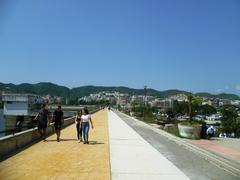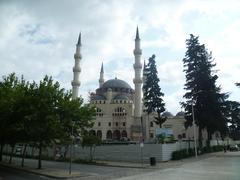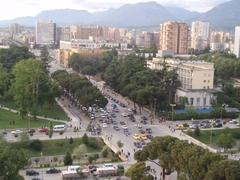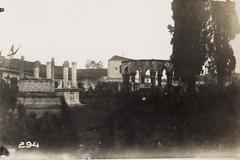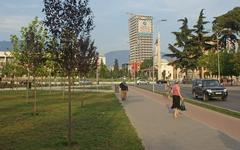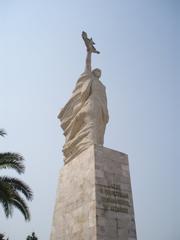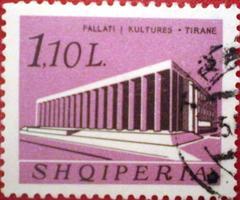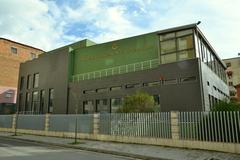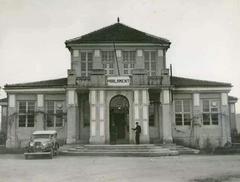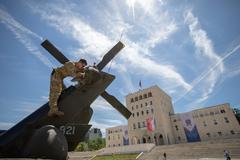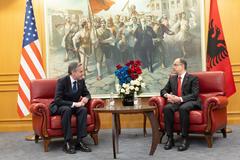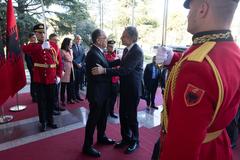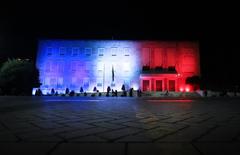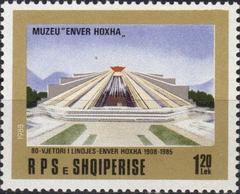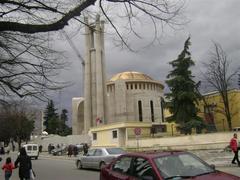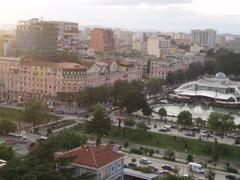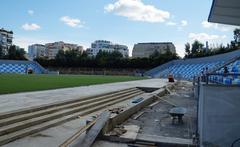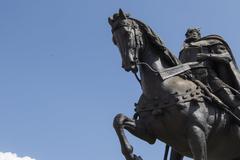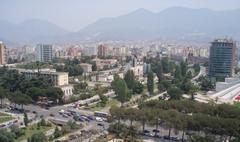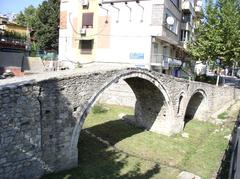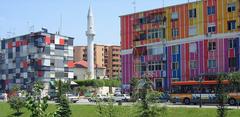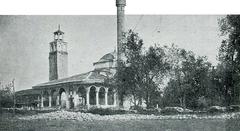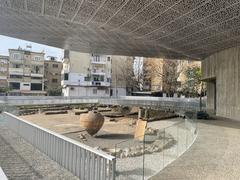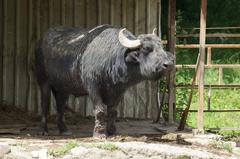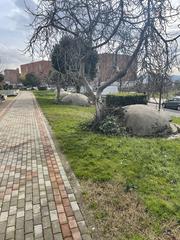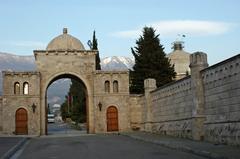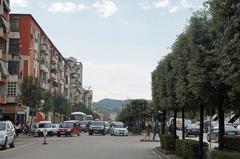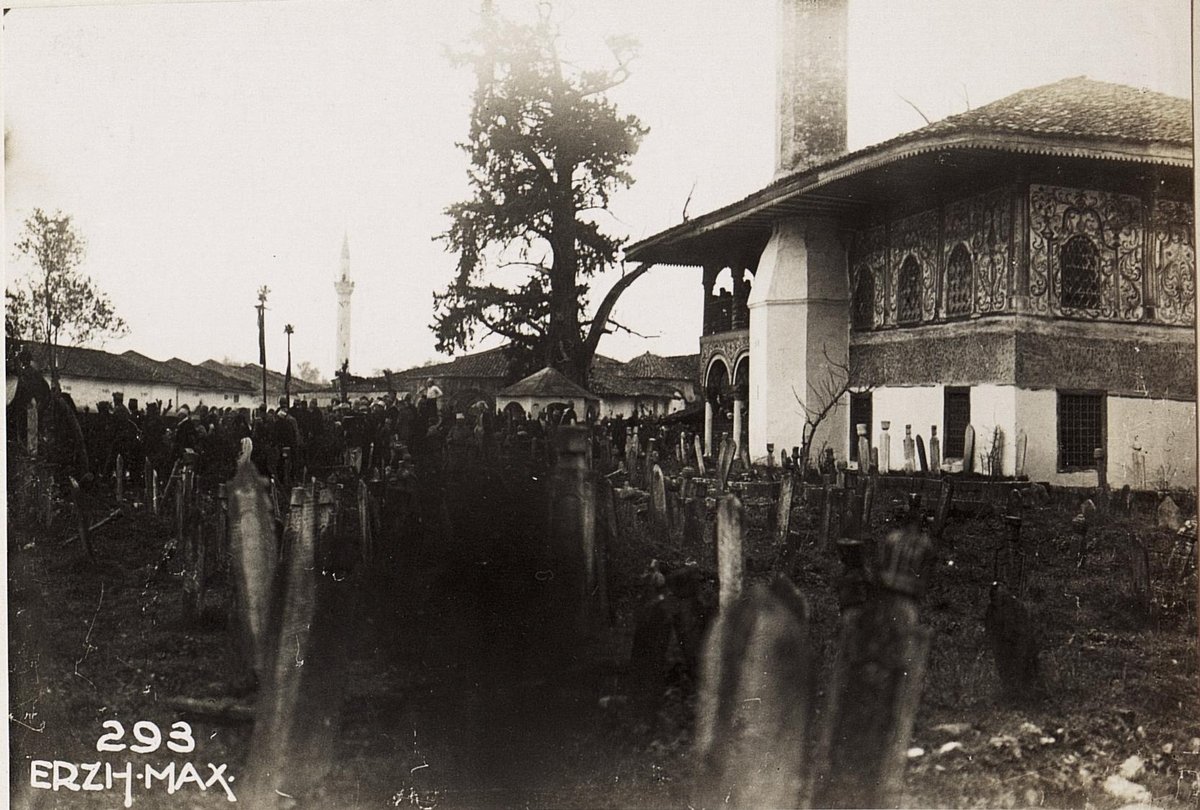
National Martyrs Cemetery of Albania: Complete Guide to Visiting Hours, Tickets, History, and Travel Tips
Date: 15/06/2025
Introduction
Perched on a scenic hillside overlooking Tirana, the National Martyrs Cemetery of Albania (Varrezat e Dëshmorëve të Kombit) stands as one of the capital’s most profound historical and cultural landmarks. Established in the post-World War II era, this monumental cemetery is dedicated to the memory of over 900 Albanian partisans who gave their lives during the National Liberation War. Beyond its role as a burial ground, the site encapsulates Albania’s turbulent 20th-century journey, blending themes of resistance, socialist-era art, and evolving national identity.
The centerpiece of the cemetery is the striking 12-meter Mother Albania statue, an emblem of maternal protection and national pride. The cemetery’s architectural design, from its terraced graves to its ceremonial plateau, guides visitors through a narrative of heroism and unity. Today, the cemetery remains a focal point for state ceremonies such as Martyrs’ Day and Liberation Day, reflecting its ongoing social and political significance.
This comprehensive guide provides detailed insights into the National Martyrs Cemetery’s history, architecture, symbolism, and all practical information you need as a visitor—including hours, tickets, accessibility, directions, and nearby attractions. Whether your interest is in Albania’s wartime sacrifices, its socialist artistic heritage, or you simply wish to experience an essential Tirana historical site, this guide will enrich your visit (wiki-gateway.eudic.net; Michael Harrison; RTSH).
Historical Background
Establishment and Purpose
The National Martyrs Cemetery was inaugurated in the 1970s, as part of a nationwide effort to create a central place of remembrance for those who fell during Albania’s fight against fascist occupation. The site’s location—on a prominent hill southeast of Tirana—was selected for its visibility and symbolic resonance (wiki-gateway.eudic.net). While approximately 900 partisans are buried here, the cemetery is a symbol for all of Albania’s war dead, with the broader resistance tallying up to 28,000 lives lost (Nomads Travel Guide).
The Anti-Fascist National Liberation War
The cemetery honors those who resisted Italian and German forces from 1939 to 1944. The National Liberation Movement was pivotal in Albania’s wartime history. The liberation of Tirana on November 29, 1944, is commemorated every year, reinforcing the site’s importance in the national consciousness (michaelharrison.org.uk).
Political and Social Context
During the communist era, the cemetery was central to Albania’s political life, hosting state ceremonies and serving as the original burial place for Enver Hoxha until 1992. The legal recognition of martyrs has continued to evolve, with new laws in the 2000s expanding the scope to include those lost in later conflicts like the Kosovo War (albaniandailynews.com; RTSH).
Architectural and Artistic Features
Site Layout
Spanning nearly 95,000 square meters, the cemetery is Albania’s largest site of its kind (Tirana Triennale). Visitors approach via a wide ceremonial avenue, ascending a grand staircase to a plateau that offers sweeping views of the city and Mount Dajti National Park. The spatial organization is designed to foster solemn reflection throughout the visitor journey (Michael Harrison).
The Mother Albania Statue
The 12-meter-tall Mother Albania statue, created by Kristaq Rama, Muntaz Dhrami, and Shaban Hadëri, is the site’s most iconic feature (Wikipedia). Depicting a powerful maternal figure holding a laurel wreath and a five-pointed star, it is a masterful example of Socialist Realist art. The base inscription, “Lavdi e përjetshme dëshmorëve të Atdheut” (“Eternal Glory to the Martyrs of the Fatherland”), cements its commemorative role (Wikipedia).
Grave Markers and Memorial Design
Simple stone monuments arranged in neat rows mark the graves of partisans. Laurel leaf carvings symbolize honor and sacrifice, while red stars on headstones denote Communist partisans. The juxtaposition of the monumental statue and understated graves invites contemplation on both collective and individual sacrifice (Michael Harrison).
Ceremonial Spaces
The plateau before Mother Albania is the main ceremonial ground, often used for major commemorations like Liberation Day and Martyrs’ Day. Its design and views reinforce the cemetery’s dual role as sacred ground and national stage (Michael Harrison).
Integration with Tirana’s Urban and Natural Environment
Set high above Tirana, the site integrates seamlessly with the city’s landscape, maximizing the monument’s visibility and creating a tranquil atmosphere with its greenery and proximity to Mount Dajti (Tirana Triennale).
Visiting the National Martyrs Cemetery of Albania
Opening Hours
- General Hours: Open daily, 8:00 AM – 6:00 PM.
- Note: Hours may vary slightly by season or during special events or national holidays.
Entrance Fee and Tickets
- Admission: Free of charge; no tickets required.
Accessibility
- Physical Access: Paved paths and wide staircases are present; however, the incline may pose challenges for those with limited mobility. Some alternative routes with gentler slopes are available, and benches are placed throughout for rest.
- Assistance: For accessibility needs, assistance can be requested at the entrance.
Getting There
- By Taxi: Quick, direct access from Tirana’s city center.
- By Bus: Use the Kombinat bus line from near Skanderbeg Square; fare is about 40 leke. From the last stop, it’s a 10-minute uphill walk (Left Side of the Road).
- On Foot: A scenic 30–40 minute uphill walk from the center.
- Parking: Limited parking available near the entrance.
Guided Tours and Special Events
- Guided Tours: Offered by local tour operators and, occasionally, by the Tirana Tourism Office. Tours provide in-depth historical and artistic context.
- Commemorations: Major ceremonies occur on Martyrs’ Day (May 5) and Liberation Day (November 29), often attended by state officials and the public (RTSH).
Visitor Experience
- Atmosphere: The elevated, tree-filled grounds offer a peaceful retreat from Tirana’s urban bustle. The site is rarely crowded except during major national events.
- Photography: Permitted throughout the cemetery. The best shots are from the plateau, with panoramic city views and close-ups of the statue. Please be discreet during ceremonies or when locals are present.
- Facilities: No on-site restrooms or cafes; bring water, especially in warmer months.
- Duration: Allocate 1–2 hours for a meaningful visit.
Nearby Attractions
- Grand Park of Tirana: Ideal for walks and relaxation, located nearby.
- National History Museum: Located in the city center, offers broader context on Albania’s past.
- Pyramid of Tirana: A notable example of Albanian modernist architecture, close to Skanderbeg Square.
- Mount Dajti National Park: For those wishing to extend their visit into nature.
Practical Tips for Visitors
- Best Time to Visit: Spring and autumn (late March–June; September–October) offer pleasant weather and fewer crowds (Wander-Lush).
- Dress: No formal code, but respectful attire is encouraged.
- Language: English is spoken in many parts of Tirana; learning basic Albanian greetings is appreciated (The Balkans and Beyond).
Frequently Asked Questions (FAQ)
Q: What are the cemetery’s visiting hours?
A: Daily, 8:00 AM – 6:00 PM. Hours may vary slightly by season.
Q: Is there an entrance fee?
A: No, entrance is free for all visitors.
Q: How do I get there by public transport?
A: Take the Kombinat bus from near Skanderbeg Square, then walk 10 minutes uphill.
Q: Are guided tours available?
A: Yes, through local agencies or the Tirana Tourism Office.
Q: Is the cemetery accessible for visitors with mobility issues?
A: There are paved paths and alternative routes with gentler slopes, though the main staircase can be challenging.
Q: What is the significance of the Mother Albania monument?
A: It symbolizes Albania as a protective mother, paying tribute to the country’s martyrs and embodying themes of victory, sacrifice, and unity.
Conclusion
The National Martyrs Cemetery of Albania is an essential landmark for anyone seeking to understand the nation’s wartime sacrifices, artistic heritage, and ongoing journey toward unity and remembrance. With free access, generous opening hours, and proximity to Tirana’s other major attractions, it is both a powerful site of reflection and a testament to Albania’s enduring spirit.
Plan your visit to experience the historical, cultural, and emotional resonance of this remarkable memorial. For more travel tips, guided tours, and current updates, download the Audiala app and follow related Albanian heritage resources.
Sources
- National Martyrs Cemetery of Albania, Wikipedia
- National Martyrs Cemetery Tirana Albania, The Passenger
- Martyrs Cemetery Tirana, Michael Harrison
- Albania Honors Martyrs of the Nation, Albanian Daily News
- National Martyrs Cemetery of Albania, RTSH
- Dita e Dëshmorëve, CNA
- Cemetery of the Martyrs of the Nation, Tirana Triennale
- Martyrs Cemetery, Nomads Travel Guide
- Visiting Enver Hoxha’s Grave in Tirana, Left Side of the Road
- Practical Tips for Visiting Albania, The Balkans and Beyond
- Travel Tips for Albania First Time Visitors, Wander-Lush
